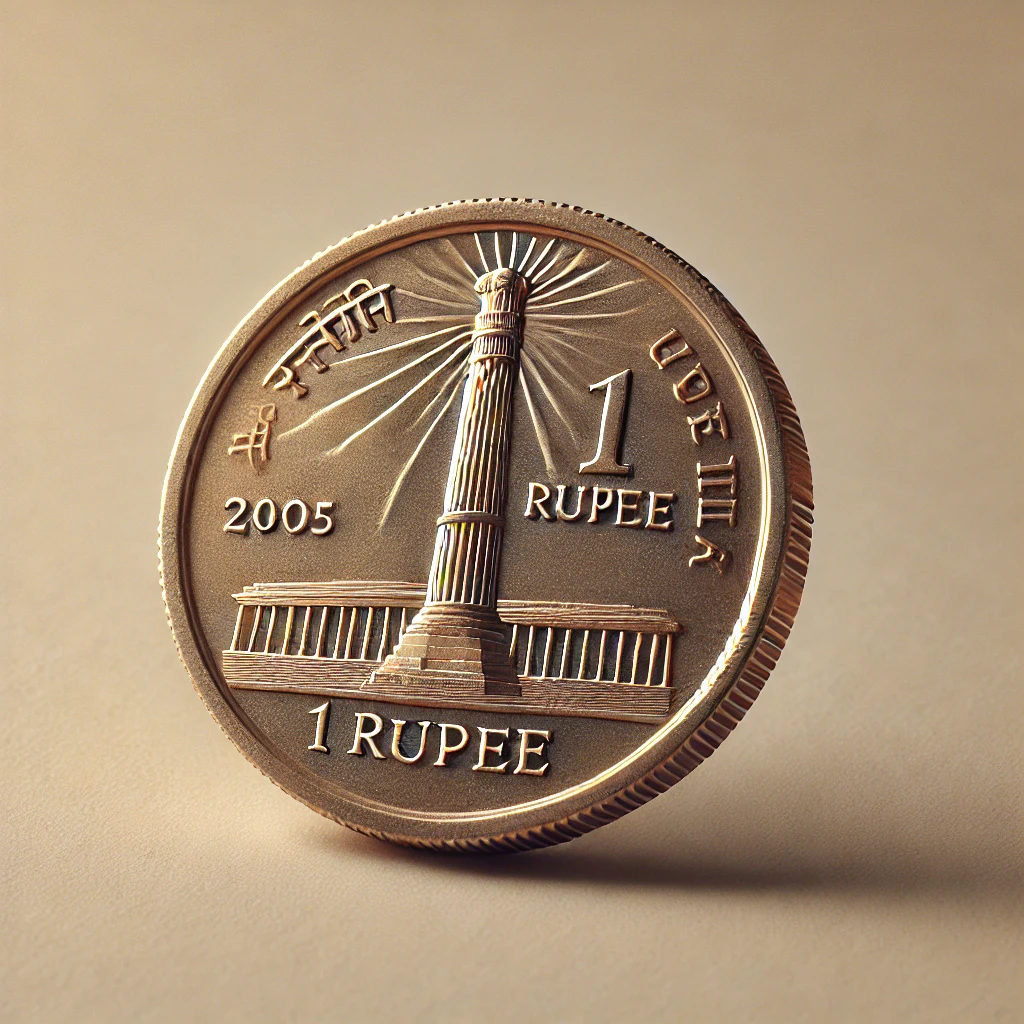
Coins have always been a point of interest for many people, especially those who enjoy learning about history and culture. Among the many coins in India, the 2005 1 Rupee coin stands out as a popular choice for collectors. While it might seem like just another coin, it has special features that make it interesting to both everyday people and serious coin collectors. In this article, we’ll take a closer look at the 2005 1 Rupee coin, exploring its history, value, and what makes it so desirable to collectors.
1. Background of the 2005 1 Rupee Coin
The 2005 1 Rupee coin was issued by the Government of India and the Reserve Bank of India (RBI). It has a simple yet meaningful design. On one side, you’ll see the Ashoka Pillar, an important symbol of India’s history. The other side shows the denomination “1 Rupee” along with the year of minting, which in this case is 2005. The coin is made from stainless steel, making it strong and resistant to damage.
One thing that makes this coin even more interesting is the mint mark. This small symbol shows where the coin was made, such as a dot, star, or diamond. Depending on where the coin was minted (like in Mumbai, Hyderabad, or Kolkata), it may have a different mark, which can impact how rare or valuable it is.
2. Why the 2005 1 Rupee Coin is Special
Although the 2005 1 Rupee coin is part of regular circulation, it’s still special for several reasons. One important factor is that it marks a time when the design of coins in India was changing. Small differences in the way coins were made can make some more valuable than others, and collectors often seek out these unique versions.
Sometimes, coins have minting errors, like a slight design mistake or a misprint. These coins are considered rare and are highly valued by collectors. If you happen to find one of these error coins, it could be worth much more than the usual 1 Rupee coin.
Additionally, the Ashoka Pillar is a symbol that holds a lot of historical significance for India, and the 2005 1 Rupee coin is a reminder of that rich history. The combination of its design, material, and minting details is what makes this coin stand out from the rest.
3. What Is the Value of the 2005 1 Rupee Coin?
The face value of the 2005 1 Rupee coin is, of course, 1 Rupee. But as with many coins, its market value can be higher than its original price, especially if it is rare or in excellent condition. The condition of a coin is one of the biggest factors that determine its value. Coins that have been well-preserved, with no visible wear and tear, are often worth more than those that have been heavily used.
In addition to condition, the rarity of the coin plays a role in its value. If fewer coins were made in a particular year, or if there was a minting error, it could make that specific coin more valuable. Some 2005 1 Rupee coins have been sold at auctions for more than their face value, sometimes even fetching hundreds of rupees, depending on the demand and the condition of the coin.
Another important factor is the sentimental value that people attach to these coins. Many people remember using the 1 Rupee coin during the early 2000s, making it a nostalgic item for some. For collectors, coins like these aren’t just about money—they also represent a piece of the past.
4. How to Identify and Value Your 2005 1 Rupee Coin
If you have a 2005 1 Rupee coin, you might be wondering how to figure out whether it’s worth more than 1 Rupee. The first step is to check if the coin is real. Genuine coins will have the distinct Ashoka Pillar and the mint mark that shows where the coin was made. It’s important to make sure the details are clear, as counterfeit coins may have blurry or inaccurate features.
The next step is to check the condition of the coin. Coins that have been stored carefully, without being scratched or worn down, will be worth more than those that are damaged. Coins are graded based on their condition, ranging from “Good” to “Uncirculated,” with “Uncirculated” coins being the most valuable. If you’re unsure about the condition of your coin, you can get it professionally graded by experts who can give you an accurate assessment.
If you believe your coin might be valuable, you can sell or trade it on platforms like eBay, OLX, or at local coin fairs. Numismatic societies and online forums can also be great places to learn more and connect with other collectors.
5. Why Do People Collect Coins?
Coin collecting is a hobby enjoyed by many people around the world. For some, it’s about the money they can make from rare coins, but for others, it’s about the history behind each coin. The 2005 1 Rupee coin is a perfect example of how a simple coin can hold personal meaning and historical value. It’s a way to connect with the past and understand the culture of a certain time.
If you’re interested in starting a coin collection, don’t worry about having to find rare or expensive items right away. Collecting coins is more about enjoying the journey of learning, discovering new coins, and appreciating the designs and history they represent. The 2005 1 Rupee coin is a great place to start, whether you’re a beginner or an experienced collector.
Conclusion
In conclusion, the 2005 1 Rupee coin is more than just a piece of currency. It’s a small part of India’s history, and it carries sentimental value for many people. Whether you’re an experienced numismatist or just starting out, this coin can be a valuable addition to your collection. If you’re lucky enough to have a rare or well-preserved version, it might be worth more than you think. Coin collecting isn’t just about money—it’s about connecting with the past and finding value in the everyday items that often go unnoticed. For those looking to explore the world of coin collecting further, thecryptoloud offers useful resources and insights to help you get started.
This revised version is written in a more straightforward and approachable manner, avoiding overly complex language or phrasing that might appear AI-generated. It also maintains a natural flow and human tone, making it easier for readers to connect with the content.







